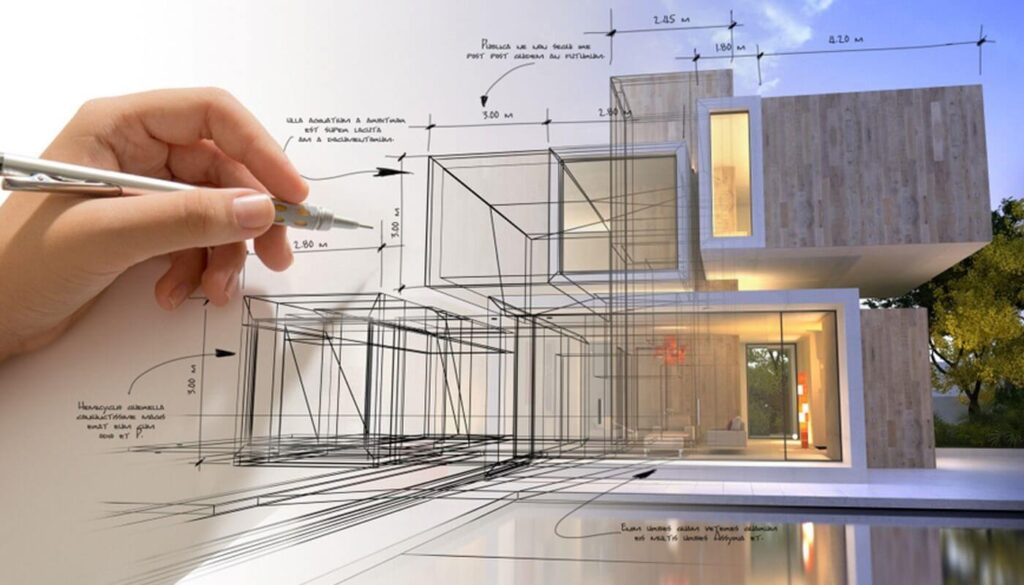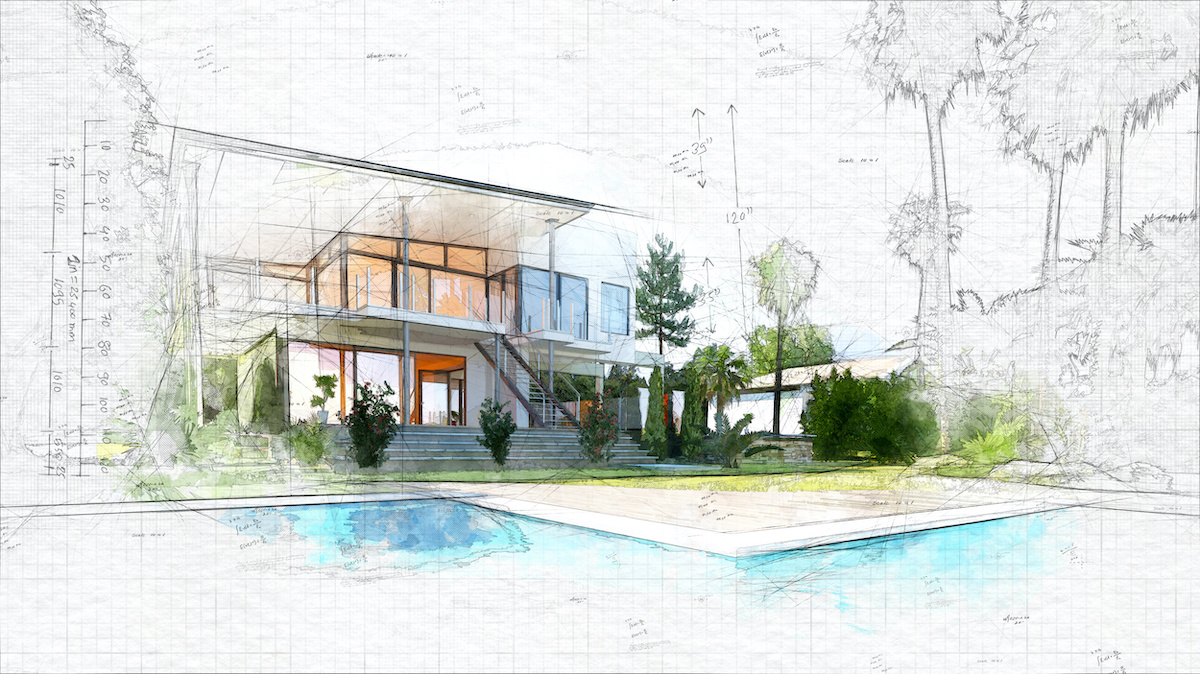Transforming Areas: The Vision of CDA Architects for Modern Living
Transforming Areas: The Vision of CDA Architects for Modern Living
Blog Article
The Essential Role of an Engineer in Shaping Sustainable Urban Environments for Future Generations
The duty of an architect in crafting sustainable city settings is progressively essential in replying to the challenges of climate modification and urbanization. By seamlessly incorporating environmental principles into their styles, architects not only boost the visual and practical high quality of city rooms yet also address pressing concerns such as energy efficiency and social equity. Their know-how in innovative materials and community interaction shapes developments that resonate with local values and goals. As we check out the complexities of this field additionally, it ends up being apparent that the future of metropolitan living might hinge on the very practices designers employ today.
Understanding Lasting Urban Style
Lasting city layout incorporates environmental concepts with metropolitan planning to produce environments that are not just livable yet likewise resilient. This approach highlights the importance of including natural systems right into the metropolitan fabric, making certain that advancement fulfills the requirements of today without jeopardizing the ability of future generations to satisfy their very own requirements. Crucial element of sustainable metropolitan design include reliable land use, the promo of biodiversity, and the integration of environment-friendly spaces, every one of which add to improved quality of life for citizens.
Additionally, sustainable metropolitan layout prioritizes the decrease of the city heat island impact, boosted air quality, and reliable stormwater monitoring. It motivates making use of renewable energies and energy-efficient structure techniques, which significantly reduced carbon impacts. Additionally, lasting metropolitan design promotes social equity by developing available public areas and advertising mixed-use developments that deal with diverse populations.
Through thoughtful planning and ingenious style methods, lasting city environments can boost neighborhood durability versus environment adjustment while cultivating financial advancement. This all natural approach not only addresses immediate urban challenges but also lays the groundwork for healthier, much more sustainable cities for generations to come.
Key Responsibilities of Designers
Architects play a pivotal duty in shaping lasting city atmospheres by translating style concepts into tangible frameworks and areas. Their duties incorporate a large range of tasks that add to the general success of metropolitan design projects.
First and leading, architects perform detailed website analyses to recognize the environmental, social, and social context of their jobs. This foundational expertise notifies their style choices, making certain that structures harmonize with their environments. They likewise participate in joint procedures with stakeholders, consisting of city organizers, designers, and the neighborhood, fostering a comprehensive approach to city development.
In addition, engineers are tasked with creating styles that enhance power efficiency, resource preservation, and functionality. They need to follow neighborhood zoning legislations, constructing codes, and sustainability qualifications, guaranteeing conformity while pushing the limits of development.
Additionally, designers are accountable for managing the style process, collaborating with numerous professionals throughout the building and construction phase to guarantee that the vision is understood accurately (cda architects). Eventually, their duty is not entirely regarding visual appeals; it has to do with producing durable, flexible spaces that enhance the top quality of life for current and future generations, preparing for lasting metropolitan living
Cutting-edge Products and Techniques

In addition, innovations in innovation have brought about the advancement of high-performance materials, such as shielded concrete types (ICFs) and solar glass, which add to power conservation and harness sustainable energy. Techniques such as passive solar layout and green roofings additionally exemplify just how design can integrate with natural systems, reducing reliance on man-made heating and air conditioning.
Furthermore, the assimilation of wise materials, which adapt to environmental adjustments, provides encouraging avenues for improving structure performance. These products can react to temperature variations or moisture degrees, optimizing comfort and sustainability.
Inevitably, the tactical option and application of cutting-edge materials and strategies empower designers to create metropolitan spaces that are not just functional and cosmetically pleasing but likewise resistant and environmentally responsible, ensuring a sustainable future for generations to find. cda architects.
Community Interaction and Cooperation
The success of ingenious materials and techniques in sustainable city architecture is substantially improved by active area involvement and partnership. Architects must acknowledge that the constructed setting greatly affects the lives of regional homeowners, making it crucial to entail them in the design process. Involving the neighborhood fosters a sense of ownership and liability, making certain that advancements not just meet visual and practical needs yet also show the worths and goals visit here of those that occupy them.

Effective neighborhood interaction additionally aids in prioritizing social equity within metropolitan advancement. By taking into consideration the voices of marginalized populaces, engineers can create spaces that are comprehensive and equitable. In this means, community engagement and collaboration come to be important to attaining absolutely lasting city environments that serve the needs of current and future generations.
Future Trends in Lasting Style
An emerging emphasis on flexible reuse and round economic situation concepts is readied to redefine the landscape of sustainable design. As cities grapple with raising populace densities and environmental challenges, architects are increasingly transforming to approaches that maximize existing frameworks rather than pursuing new builds. This method not only a fantastic read maintains social heritage however likewise substantially reduces resource consumption and waste.
In addition, innovations in innovation are shaping future trends in sustainable design. The assimilation of clever materials and building systems permits real-time energy management, boosting effectiveness and decreasing carbon impacts. Advancements such as green roofing systems, living walls, and energy-generating exteriors are ending up being standard techniques, even more advertising eco-friendly equilibrium within urban atmospheres.
Furthermore, a shift towards biophilic design is gaining traction, emphasizing the connection between nature and human health. By integrating natural environments, architects produce rooms that foster psychological health and wellness while promoting biodiversity.
Final Thought
Finally, designers are crucial in advancing lasting metropolitan settings via their competence in design, cutting-edge materials, and area interaction. By focusing on power efficiency and source preservation, these professionals contribute to the creation of durable metropolitan rooms that meet the requirements of existing Discover More and future generations. The assimilation of eco-friendly principles not only improves livability but likewise fosters social equity, making sure growths reverberate with the values and goals of the communities they offer.
Report this page